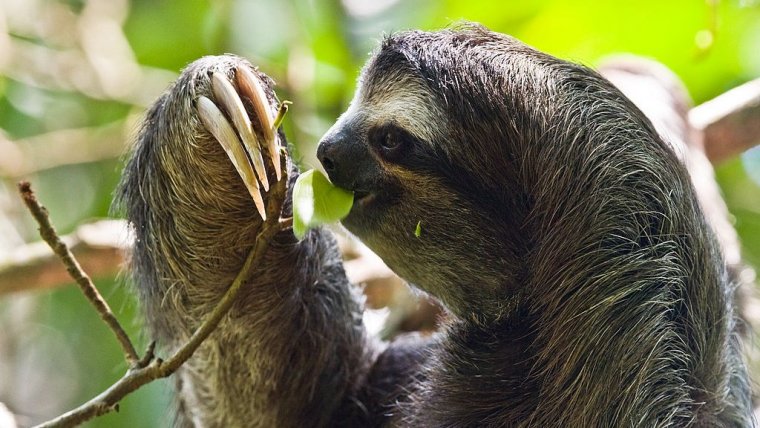| News / Science News |
Putting the sloth in sloths: Arboreal lifestyle drives slow pace
NSF | AUGUST 9, 2016
Tree sloths are among the most emblematic tree-dwelling mammals. They are best known for their pokey demeanor rather than the fact that they spend the majority of their lives in trees munching leaves. But the slow-motion lifestyle of tree sloths, according to a new study, is a direct result of the animals' adaptation to their arboreal niche.

Feeding brown-throated three-toed sloth (Bradypus variegatus). ![]()
This study explains why eating leaves in the canopies of trees leads to life in the slow lane, why fast-moving animals like birds tend not to eat leaves, and why animals like deer that eat a lot of leaves tend to be big and live on the ground.
Most of the world is forested, but the energetic constraints of a leafy diet seem to prevent adaptive radiation. Organisms evolve and "radiate" from an ancestral group, they take on a variety of specialized forms that enable them to live a certain lifestyle or occupy a particular niche.
The evolutionary logic of living in trees on a diet solely of leaves, it seems, is less than robust. Tree sloths require specialized limb adaptations, reduced body mass, a slow metabolic rate and claws that act like fulcrums -- hooks to accommodate the animals' need to hang onto and traverse treetops.
The scientists measured the daily energy expenditure of both two- and three-toed sloths, animals that co-exist in the tropical forest canopies of Central and South America.
Astonishingly, three-toed sloths, which are more specialized to their environment, expend as little as 460 kilojoules of energy a day, the equivalent of burning a mere 110 calories -- roughly the same number of calories in a baked potato.
It is the lowest measured energetic output for any mammal. A diet of plant leaves has little nutritional value and that the animals' gut size limits them to small amounts per day, so sloths need to find ways to make the most of their skimpy diets.
That means expending minimal amounts of energy through a reduced metabolic rate, dramatic regulation of body temperature, and navigating the world in slow motion.
YOU MAY ALSO LIKE



